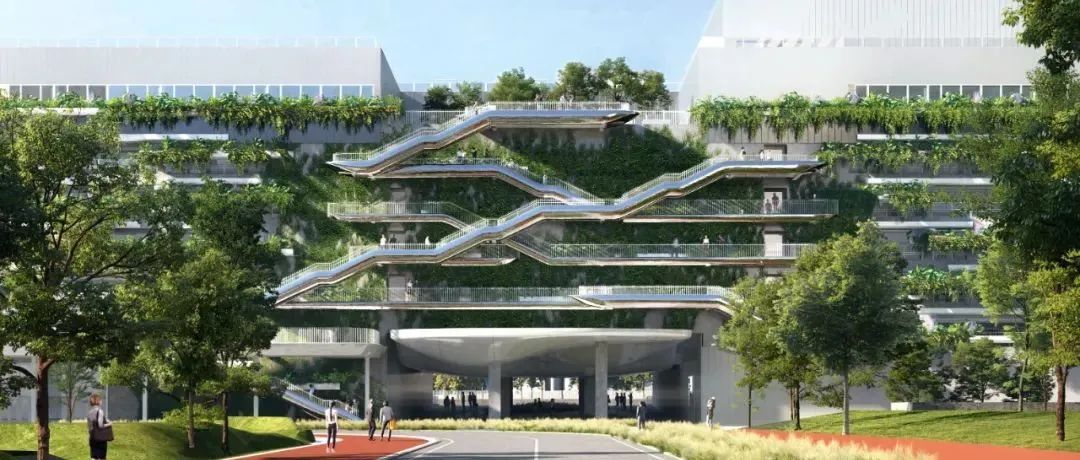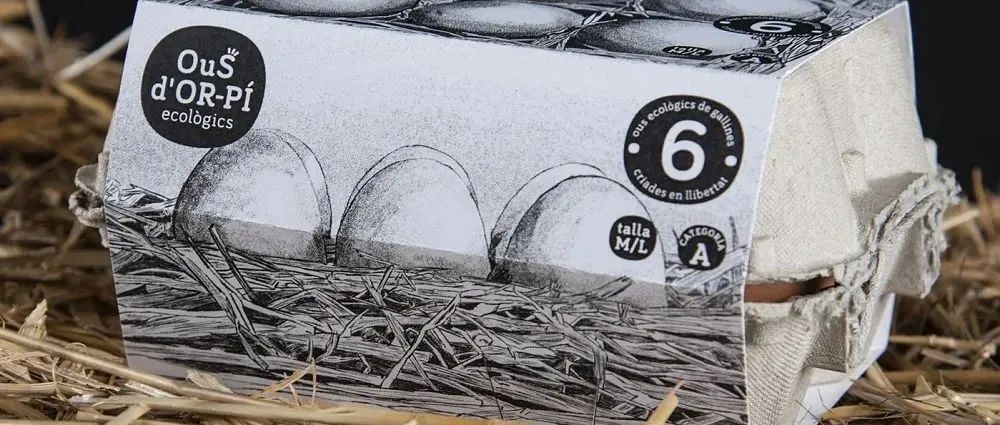三亚天丽湾凯悦酒店位于海南省三亚市,距离机场4.5公里,地处海南第一名胜 - 三亚天涯海角景区内,是富华国际集团与凯悦酒店集团携手打造的临海景观休闲度假型酒店,背靠山峦,面朝大海,具有独一无二的私属海岸线风景。HOK为项目提供了总体规划、建筑设计及景观设计服务。项目目前主体已经接近完工,并正在进行景观的施工打造。
项目规模:占地 19.8公顷;总建筑面积 103,378平方米
服务:总体规划、建筑设计、景观设计
酒店由三个组团组成,包含9栋客房楼,酒店别墅区,酒店宴会厅及特色商业小镇。配套设施包含全日餐厅,行政酒廊,总统套房,中心泳池,儿童戏水池,儿童户外游乐区,SPA,悦趣营,室内游乐设施,婚礼教堂,室外宴会区,鲸鱼互动区,以及酒店私人海滩等。
总体规划
酒店体量以及度假体验与自然生态环境相互依存成为打造该项目的终极目标。
酒店所在区域原始地貌西高东低,北高南低。场地依山傍水、视野开阔,有着丰富的自然景观以及不同形态的海岸线生态资源。而如何合理利用场地景观资源,同时维护现有生态环境、保护景区资源以及维持城市海岸线视觉连续性成为项目前期规划首要解决的问题。酒店体量以及度假体验与自然生态环境相互依存成为打造该项目的终极目标。
规划设计充分利用地形高差,将建筑体量进行拆分,同时控制高度,从城市的角度减少酒店布局和体量对原始环境的影响。在体量拆分的基础上建立有序组团并通过对体量角度的调整,在保证客房海景景观的同时最大化地让出了城市视觉景观通廊,保证城市道路海景视野的连续性,成功实现了自然、城市与建筑的和谐共存。
建筑设计
设计策略最大化了客房海景视野,为住客提供了景观沉浸式生态度假体验。
建筑外立面简洁大方,建筑形态采用简奢的白色盒子概念。配合小体量分散布局,并结合景观绿化的遮挡,使得建筑形态在海岸沿线若隐若现地托举在景观之上,犹如散落在沙滩上的一颗颗宝石熠熠生辉。
斜屋顶的设计兼顾海南本土建筑形态的同时考虑当地日照条件的优势,为太阳能利用提供了最佳光照角度,提高了绿色能源在项目中的利用率。
客房布局采用单侧外廊设计,并取消了走廊的外墙。这个设计策略在最大化了客房海景视野的同时,使公共区域与环境融为一体,从而能够为住客提供景观沉浸式生态度假体验。
公共区域尽可能采用南北通透的格局,从而形成微气候并降低能源消耗。同时利用外廊、挑檐等设计手法提供了丰富的遮阳区域,保证了客人随时都能在舒适的环境中欣赏自然以及酒店美景。
酒店设计中采用大量横向格栅及透空元素,确保了必要的空间分隔,同时最大化兼顾了视线延伸以及景观渗透。扩大了空间感受,强化了度假体验,并突出了建筑与环境和谐共存的酒店特色。
利用地形打造错落空间、下沉庭院以及地上地下通廊,加强了各建筑之间在不同天气条件下的联系,使得整体建筑在分散布局的同时拥有良好的可到达性。
景观设计
设计做到资源再生利用最大化,尊重自然,保护环境,充分利用现有资源,减少对原有生态系统的改造。
景观设计结合场地地形地貌由北至南依次展现了:森林、溪流、沙丘、湿地以及海洋五大具有当地特色的景观元素。多层次、多元化的景观设置目的在于吸引酒店客人走出房间融入自然进行充分探索和享受。
景观布局围绕总平面规划视觉通廊,打造了山海廊、曲溪廊、竹里廊、榕景廊四大别具特色的景观廊道。创造了律动、玩乐、漫步、活跃、庆典、生态修复等六大主题区域,迎合不同年龄段客人的喜好。
从大堂到海滩,以到达海滩岩石的连线为轴,层叠交错的植栽和泳池令人联想起山水融合的自然景观地貌。
主入口景观流线一步一景,抵达酒店后通过曲径道路穿越茂密的森林,跨越溪水栈桥,最后迎宾接客的是开阔的水面景致以及叠水瀑布。
中心景观取海南多民族、多文化融合的背景为灵感,形态上取材于黎锦,将东西两侧不同的景观功能交织汇聚于此。中心泳池区域作为整个酒店的核心重点景观,设置景观叠水、浅水池、戏水池、深水池,配合池畔吧、以及儿童游乐设施吸引着不同年龄层的人群。同时在泳池旁坐落着一个18米长的酒店特色IP“蓝鲸鱼”,结合互动表演及灯光秀打造了别具特色的海洋鲸鱼文化主题特色区域。
设计团队充分考虑了原有场地绿色植物的利用,尽可能地保留原有场地环境,同时对场地内植物进行选择性移植挪位,即节约了绿化成本也维护了现有的生态环境。并配合海绵城市设计体系做到资源再生利用最大化,尊重自然,保护环境,充分利用现有资源,减少对原有生态系统的改造。
三亚天丽湾凯悦酒店在设计之初充分考虑了与自然生态环境和谐共处,在设计过程中严谨落实绿色建筑设计以及海绵城市设计理念。整体建筑形态与原有环境和睦共存,通过人与自然的零距离环境打造,强化了凯悦品牌奢华度假酒店亲近自然的理念,促进了酒店发展与生态和谐的共同进步。凭借其唯美独特的自然景观资源,简奢的建筑设计理念以及多层次的景观环境,在三亚度假酒店市场中脱颖而出,为访客提供沉浸式生态度假体验,赢得客户的青睐。
Sanya Tianli Bay
Hyatt Regency Resort
This new resort is conveniently located 4.5 km west of the airport in Sanya within the “End-of-the-Earth” tourism district. With its beautiful natural scenery and sea views, this location provides exceptional leisure and recreation opportunities for visitors. By eliminating barriers between indoor and outdoor environments, the design gives resort guests easy access to nature at all times.
Size: 19.8 ha; 103,378 sq. m.
Services: Master Planning, Architecture, Landscape Architecture
The resort is composed of three clusters of buildings including guestrooms, a villa area, ballrooms and a retail village. Amenities include all-day dining, an executive lounge, a presidential suite, swimming pools, kid’s pools, a kid’s outdoor play area, spa, Camp Hyatt, indoor amusement facilities, a wedding chapel, an outdoor ballroom, a whale interactive area and a private beach. HOK provided site planning, architecture and landscape architecture for the resort.
Site Planning
Surrounded by mountains and water, the resort site offers splendid views. The rich natural landscape includes a variety of ecological resources along the shoreline.
The main planning challenge was how to best use the landscape’s natural resources while protecting the existing ecological environment and the visual continuity of the coastline. The resort needed to be integrated into the natural environment and provide an immersive experience for guests.
The site has a higher western and northern landform, and a lower eastern and southern landform. The plan takes advantage of the site’s topographic height differences by splitting the building volumes while controlling their height. This minimizes the impact on the environment.
HOK’s design orients the building layout to capture the best views. The continuity of the city road and sea views reflects the resort’s harmonious coexistence with the city and nature.
Architectural Design
The contemporary, elegant “white box” building concept includes a minimalist façade design. Dispersing the relatively small buildings on top of the landscape along the coastline creates the sensation of glittering jewels falling on the beach.
The pitched roof enhances the local aesthetic while taking advantage of natural light, reducing the need for electric lighting.
The guestrooms are along a single corridor. This enables the public corridor to integrate with the environment for an immersive eco-resort experience. Guestrooms have scenic ocean views.
Designing the public areas with a north-south ventilation pattern forms a microclimate that reduces energy consumption. Design details such as exterior corridors and overhang eaves are carefully arranged to provide abundant shaded areas. Hotel guests can enjoy views to nature in a comfortable environment at all times.
HOK’s design uses horizontal grilles and translucent elements as partitions that help preserve views to the natural landscape. It’s another example of ensuring that the buildings and environment can coexist.
The design takes advantage of the site’s rich topography to create sunken gardens as well as above- and below-ground corridors. This promotes connections between buildings in different weather conditions and ensures accessibility throughout the site.
Landscape Design
The design draws inspiration from the local landscape features including the forest, stream, sand dunes, wetlands and ocean. This layered experience encourages connections to and interactions with nature.
The four distinct landscape layouts for the resort include the Mountain-Ocean Corridor, Winding Creek Corridor, Green Bamboo Corridor and Banyan Corridor.
The design team created six main themes—Animate, Play, Amble, Activate, Celebrate and Restore—that cater to all guests.
The path from the municipal road to the hotel lobby is designed as a journey. As they emerge from the forest, guests will be greeted by an open view of the pond and spectacular waterfalls.
Inspired by the multi-ethnic and multi-cultural background of Hainan, the design of the central landscape visually resembles the pattern of Li weaving. Water weaves together various landscape programs on the resort’s east and west sides.
As the core landscape element of the resort, the Lap Pool consists of a shallow area, play area and deep-water area. A pool bar and kids play facilities attract people of all ages. An 18-meter-long hotel mascot "Blue Whale" is located next to the pool. Combined with interactive performances and light shows, it creates an ocean whale theme zone.
Building an environmentally responsible resort was a priority. The design protects the existing site and vegetation, especially big trees, by minimizing the amount of earthwork needed. Selectively transplanting and relocating plants within the site reduces initial costs while preserving the existing ecological environment.
The “sponge city” model for strengthening ecological infrastructure and drainage systems maximizes resource recycling, minimizes the impact on the eco-system and protects the native environment.
本文来自微信公众号“HOK贺克”(ID:hok_ap)。大作社经授权转载,该文观点仅代表作者本人,大作社平台仅提供信息存储空间服务。












